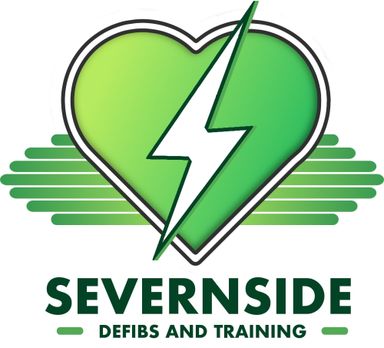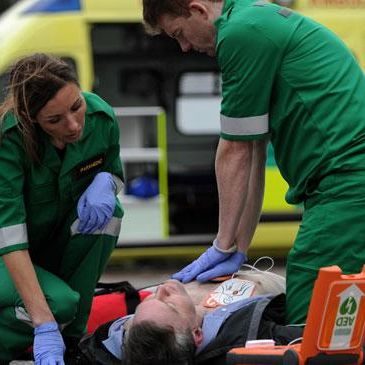
What is a Defibrillator?
To help you understand about defibrillation and defibrillators (AEDs), we have put together a list of questions we get asked most often and divided them into three sections:
What is an AED?
How do I use an AED?
How do I maintain an AED?
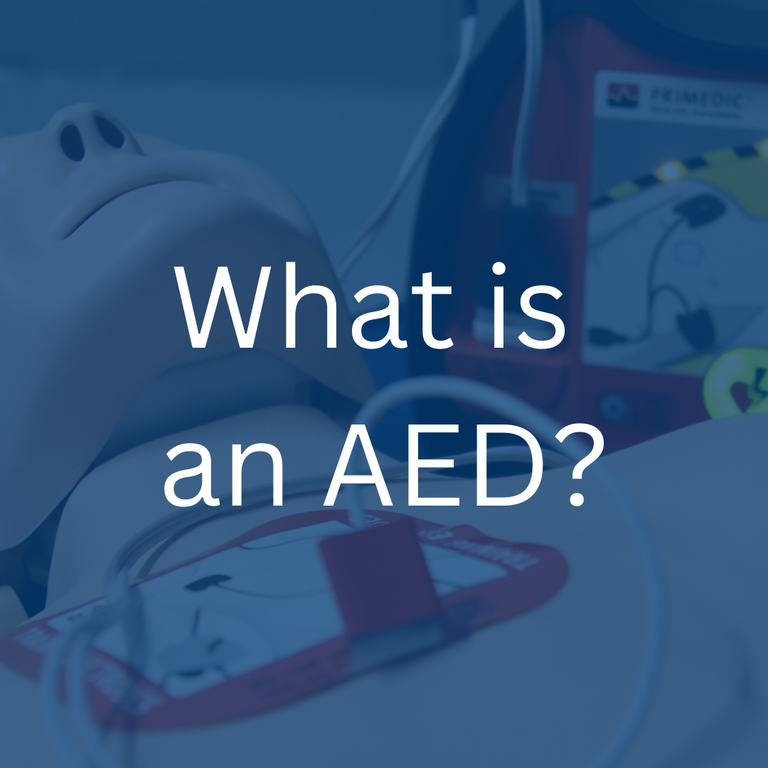
Q: What does AED stand for?
A: Automated external defibrillator.
Q: What is an AED?
A: An AED is a sophisticated, reliable, safe, computerised device that delivers electric shocks to a casualty in cardiac arrest when the ECG rhythm is one that is likely to respond to a shock. Simplicity of operation is a key feature: controls are kept to a minimum, ‘voice and visual prompts’ guide rescuers. Modern AEDs are suitable for use by both emergency first aider as well as healthcare professionals. All AEDs analyse the casualty’s ECG rhythm and determine the need for a shock. The semi-automatic AED indicates the need for a shock, which is delivered by the rescuer, while the fully automatic AED administers the shock without the need for intervention by the rescuer, semi-automatic AEDs with manual override have the facility to enable the operator (normally a healthcare professional) to override the device and deliver a shock manually, independently of prompts.
Q: What is the difference between an AED and a defibrillator?
A: There is no difference; the term AED is the generic/shortened term for a defibrillator.
Q: What is Public access defibrillation (PAD)?
A: Public access defibrillation (PAD) is the term used to describe the use of AEDs by the layperson in a public place. AEDs are installed in public places and used by people working nearby. Impressive results have been reported with survival rates as high as 74% with fast response times often possible when an AED is nearby in a complementary location.
Q: What would be the best AED for my needs/environment?
A: There are a lot of factors to consider when purchasing an AED, depending on cost, location etc. We have put together a comparison chart (see our website or catalogue) listing all the defibrillators we sell which should help make your decision easier. A first aid needs risk assessment of your working environment would also advise you of your needs.
Q: 1) Do I have to have an AED in my workplace? 2) Is it law that you have to have an AED at work? 3) Why should I have an AED in my workplace?
A: There is no legal requirement for you to have an AED in your workplace, but a first aid needs assessment might identify that there is a requirements for one, in particular if your workplace is remote, or there could be a significant delay in the ambulance service assessing (a requirement for security checks for instance). It may also be that you have a ageing work force, as statistics show there is more risk of cardiac arrest associated with this, if there has been a history of cardiac conditions in the work force or there are high volumes of public that access your workplace. Research shows that an AED in the workplace can improve survival by up to 60% if the casualty is treated immediately.
Q: Are AEDs easy to use?
A: It is very easy to use an AED. You turn on the device (some devices turn on automatically when the lid is opened), and there are clear and concise ‘voice prompts’ advising you exactly what to every step of the way (both CPR and defibrillation). Most of our AEDs can be used by an emergency first aider or layperson with minimum training, although we would recommend either a fully automatic or semi-automatic device in these circumstances.
Q: Do I have to be trained to use an AED?
A: The 2010 Resuscitation Council (UK) guidelines still advise training for AED operators but state that in an emergency you do not have to be trained to use an AED; in short it is better to use it than not, even if a trained operator is not available. All our AEDs have step-by-step voice prompts, which explain exactly what steps to take to administer both shocks and CPR – however we understand that using an AED could be a daunting experience and that is why we offer a training session on how to use it!
Q: Can AEDs be used on children as well as adults?
A: Yes, standard AED pads are suitable for use on children older than 8 years. Special infant/child pads that attenuate the current delivered during defibrillation, should be used on children aged between 1 and 8 years if they are available; however, in an emergency, if an AED with adult pads is the only device available, its use should be considered. The use of an AED is not recommended on children aged less than 1 year.
Q: Can an AED be used when it is wet or raining?
A: Yes, but care should be taken to ensure there is no direct contact between the user and the casualty when the shock is delivered. It is important in this type of scenario that you dry the casualty’s chest so that the adhesive AED pads will stick and give a good contact when a shock is delivered.
Q: Can an AED be used on a pregnant woman?
A: There are no contra-indications to using an AED during pregnancy; however the placing of the pads should be carried out with respect and dignity.
Q: Has anyone been sued in the UK for using an AED on a casualty who did not recover?
A: As far as we are aware no one in the UK has been successfully sued for using an AED on a cardiac arrest casualty and failing to revive the casualty.
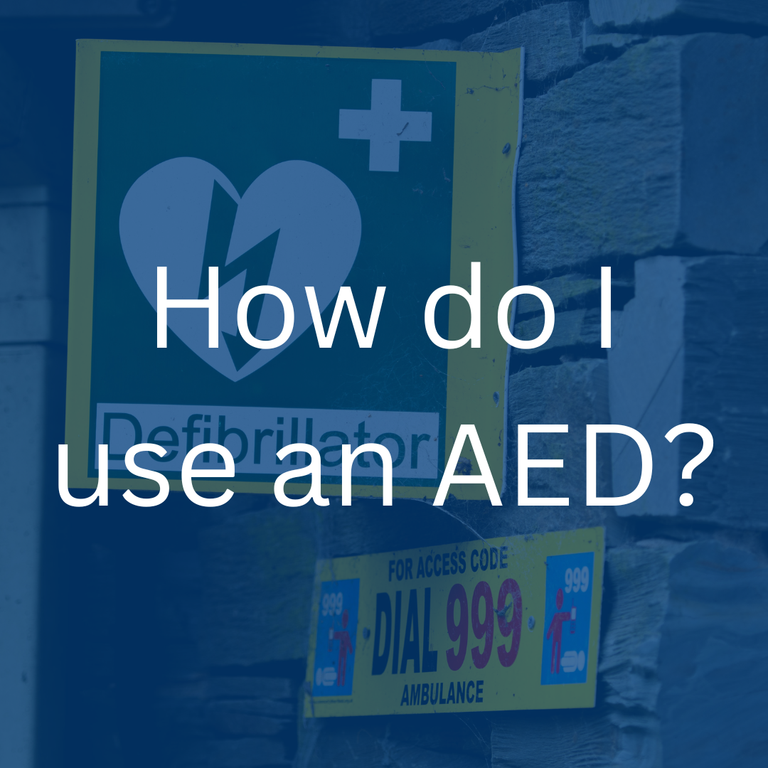
Q: What if I use an AED and make things worse by shocking someone that does not need shocking?
A: It is impossible to shock someone that does not require it, as the device only shocks if the person is in fibrillation. You should consider that an AED is only used on someone that is not breathing; in reality you cannot make this condition worse.
Q: Are AEDs dangerous unless used by a medical professional?
A: No; anyone can safely use an AED even the untrained layperson or an emergency first aider who, witnesses a cardiac arrest, or who are nearby and can respond more quickly than the ambulance service. The minutes saved are crucial and this strategy has been responsible for saving many lives. Research shows that for every minute that the first shock is delayed, the chances of the patients survival diminishes by 10%. The Resuscitation Council (UK) advises the administration of a defibrillator shock should not be delayed while waiting for more highly trained personnel to arrive. The same principle should apply to individuals whose certified period of qualification has expired.
Q: What is the difference between a heart attack and cardiac arrest?
A: Normally a person having a heart attack is conscious; a person in cardiac arrest is unconscious and not breathing.
Q: Could I kill someone if I try to defibrillate?
A: No; if someone is in cardiac arrest, in clinical terms they are already classed as dead, by using an AED you increase their chances of survival. If a person is not in cardiac arrest the device will not administer a shock. Section 3 – technical questions
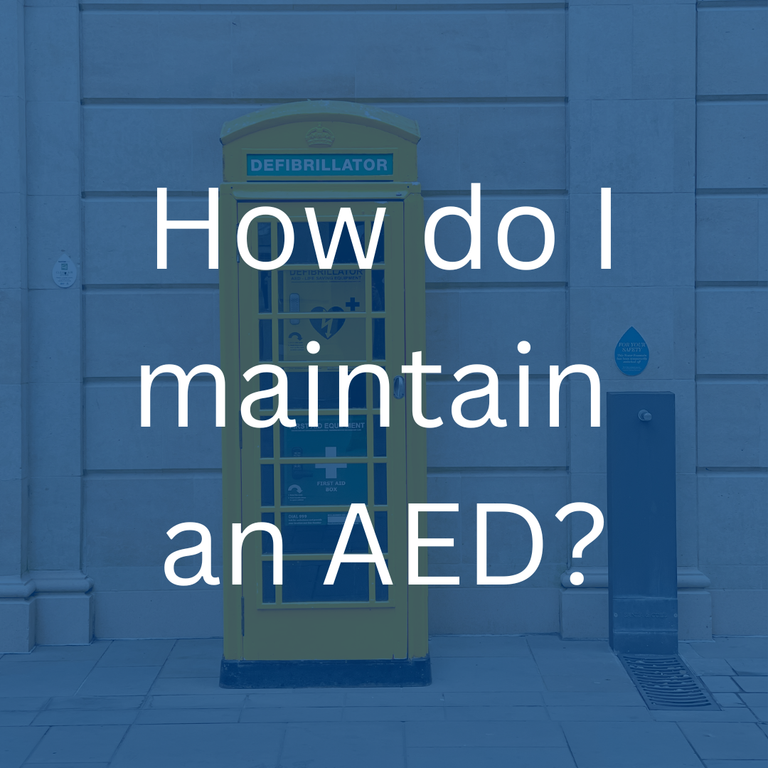
Q: Should an AED be kept in a locked cabinet?
A: Given the importance of reducing to a minimum the time taken to administer a shock, it is believed that no delays or constraints should be placed on any person willing to use an AED nor should there be any physical barrier to restrict the immediate use of an AED such as a locked cabinet. However there are cabinets available that are alarmed, giving notice that the AED is being accessed.
Q: 1) How would I know if there was a problem with the AED? 2) How often do I have to test an AED and is it easy to do?
A: All our AEDs self-test on a daily, weekly or monthly basis – so if there was a problem the device would signal to indicate what the problem was, ie. pads not correctly connected, low battery etc. AEDs also run through a self-test when activated, prior to use.
Q: What is the difference between fully automatic, semi-automatic and manual override?
A: Fully automatic - automatically administers shock if required – ideal for the emergency first aider or layperson. Semi- automatic - requires a button to be pushed in order for a shock to be administered – ideal for the emergency first aider through to EMS responders. Manual override - allows user to initiate a charge and shock without analysis – ideal for EMS responders, paramedics, basic and advanced life support professionals.
Q: What is the difference between shelf life and standby life?
A: Shelf life refers to the battery life or pad life prior to insertion into the device. Standby life refers to the battery life or pad life once inserted into the device.
Q: What does the IP rating mean?
A: IP stands for Ingress Protection (this indicates the protection against the amount of dust and water that can enter the device and not affect the working of the device) ie. an IP rating of 55 denotes that the device is dust protected as well as protected against water projected from a nozzle. The higher the rating, the better the protection.
Q: What does a Drop test relate to?
A: A drop test relates to the distance an AED can be dropped onto concrete and still work. Most defibrillators can be dropped up to a distance of 1 – 1.5 metres and still work.
Q: What is the difference between electrodes and pads?
A: Nothing, the word pads is the generic/shortened term for electrodes
Q: Can pads be reused?
A: No; even if the pads are reversed (ie. you have placed them the wrong way round on the casualty) it is not recommended that they are removed as they may not stick to the chest properly if they are reattached, and it also wastes vital time.
Q: How would I dispose of used/old batteries?
A: It is recommended that all batteries are disposed of safely (not in household waste); most local supermarkets have a used battery collection point. Or contact your local council for advice on the safe disposal of used batteries in your area.
Q: Is there a memory chip inside an AED and if so what does it record?
A: AEDs will record the incident on a memory chip/module. The information collected is the rhythm at the time the pads were placed on the chest, if the patient was shocked and the result of the shock being delivered. This information will be downloaded following the event, and the information is used by relevant bodies, such as the British Heart Foundation, as part of their research programmes and for statistical evidence of the effectiveness of AED's.
